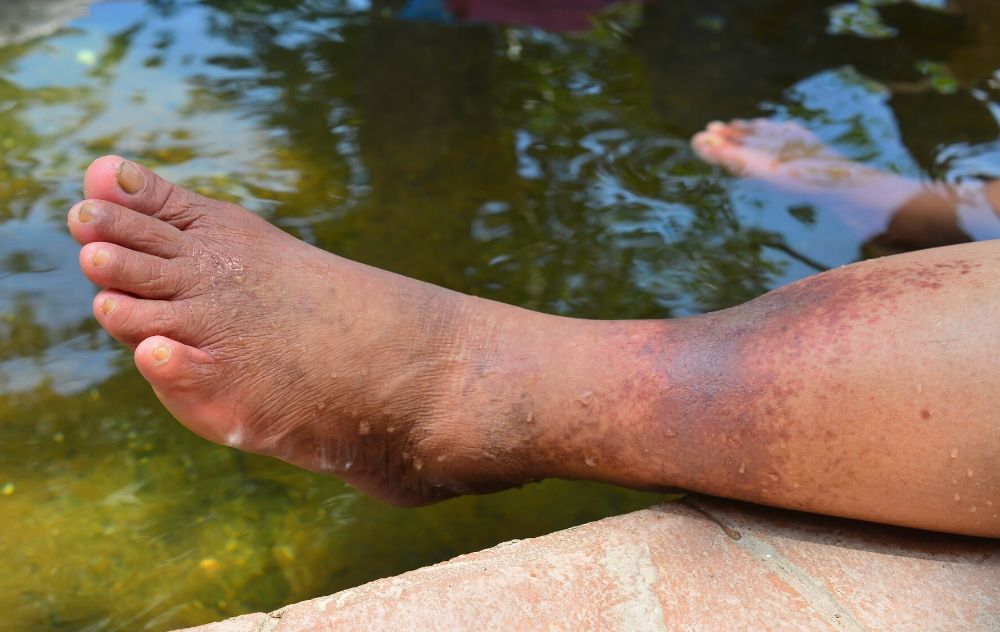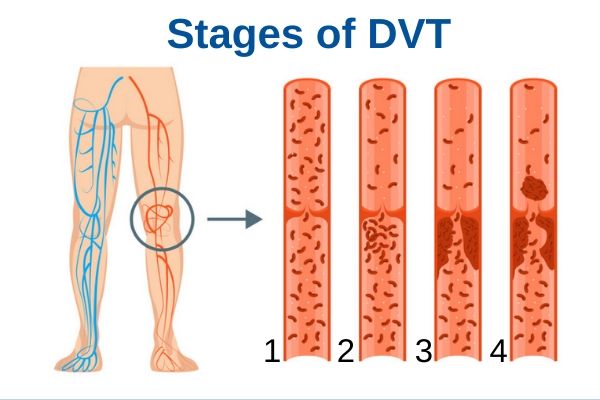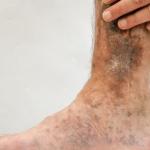
There a few signs of DVT that may not be noticeable if you’re not aware of the condition or what it can cause, shares Yan Katsnelson M.D. Deep Vein Thrombosis (DVT) occurs when a blood clot forms in the veins that are deep in the body, often in the legs. Blood clots can be caused by anything that prevents the blood from circulating properly through the legs and ankles.
As the blood is unable to move through the legs and ankles, it causes a backup of blood in the leg. This collection of blood often leads to an array of painful symptoms.
Some of the most common signs of DVT include:
- Leg pain
- Swelling
- Tenderness
- Warmth
- Redness or skin discoloration
- Cramping in the calf, “Charlie Horse”
If DVT leads to pulmonary embolism it can obstruct blood flow in the pulmonary arteries, straining the heart, which may lead to heart failure. In some cases, DVT can also lead to post-thrombotic syndrome (PTS). PTS is a serious condition where blood clots in the veins can obstruct blood flow, causing blood to pool in the lower extremities, typically in the ankles. This may contribute to pain and swelling in the legs or ankles.
Vein Anatomy
In order to fully be aware of all the potential warning signs of DVT, its important to first understand the basic anatomy of our venous system. There are two main types of veins found in the leg and ankles. These are the superficial and deep veins. Superficial veins are small and can be seen easily through the skin. Deep veins however, are deeper under the skin, in the muscles. When our heart pumps blood, the arteries use small muscles to help the blood flow through to superficial veins, until they finally reach the deep veins. it’s not always dangerous when a blood clot develops in the deep vein, however if the blood clot starts to travel through the body, serious complications can occur.
Pulmonary Embolism (PE)
“The most serious threat associated with DVT is Pulmonary Embolism (PE),” states Dr. Yan Katsnelson.
A PE can occur when part of a blood clot breaks off and travels through the bloodstream to the lungs. If the clot is big enough, it can prevent blood from reaching the lungs, and this condition can be fatal if the blood supply is cut off. Some of the symptoms of PE are chest pain, difficulty breathing, shortness of breath and coughing up blood.
According to the Centers for Disease Control and Prevention (CDC), every year approximately 60,000 to 100,000 people in the US die of this complication.
DVT Risk Factors
There are certain factors that can increase the risk for DVT. These risk factors include:
- Chronic Inactivity
- Obesity
- Smoking
- Cancer
- Inheriting a Blood Clotting Disorder
- Pregnancy
- Birth Control Pills / Hormone Replacement Therapy (HRT)
DVT and Vein Disease
If you have vein disease or varicose veins, you could be at risk for developing DVT. It’s important to see specialist as soon as you notice symptoms, as vein disease can cause complications if left untreated. At USA Vein Clinics, we specialize in the non-surgical treatment of vein disease. We use a variety of minimally-invasive treatments like Endovenous Laser Therapy (EVLT) and ClariVein.
Give us a call at 888.768.3467 to schedule a consultation with one of our skilled vein specialists. At USA Vein Clinics, all of our non-surgical vein disease treatments at are covered by most insurance plans and Medicare.
Dr. Yan Katsnelson is a philanthropist, business owner, and highly skilled cardiac surgeon. He is the Founder and CEO of USA Vein Clinics, which is part of USA Clinics Group, the parent company of USA Fibroid Centers, USA Vascular Centers, and USA Oncology Centers with more than 90 facilities nationwide. Dr. Yan has established himself as a strong advocate for accessibility and affordability of the most advanced medical care close to home, and his mission is to create a positive experience for each patient with compassionate, personalized, and expert care.






